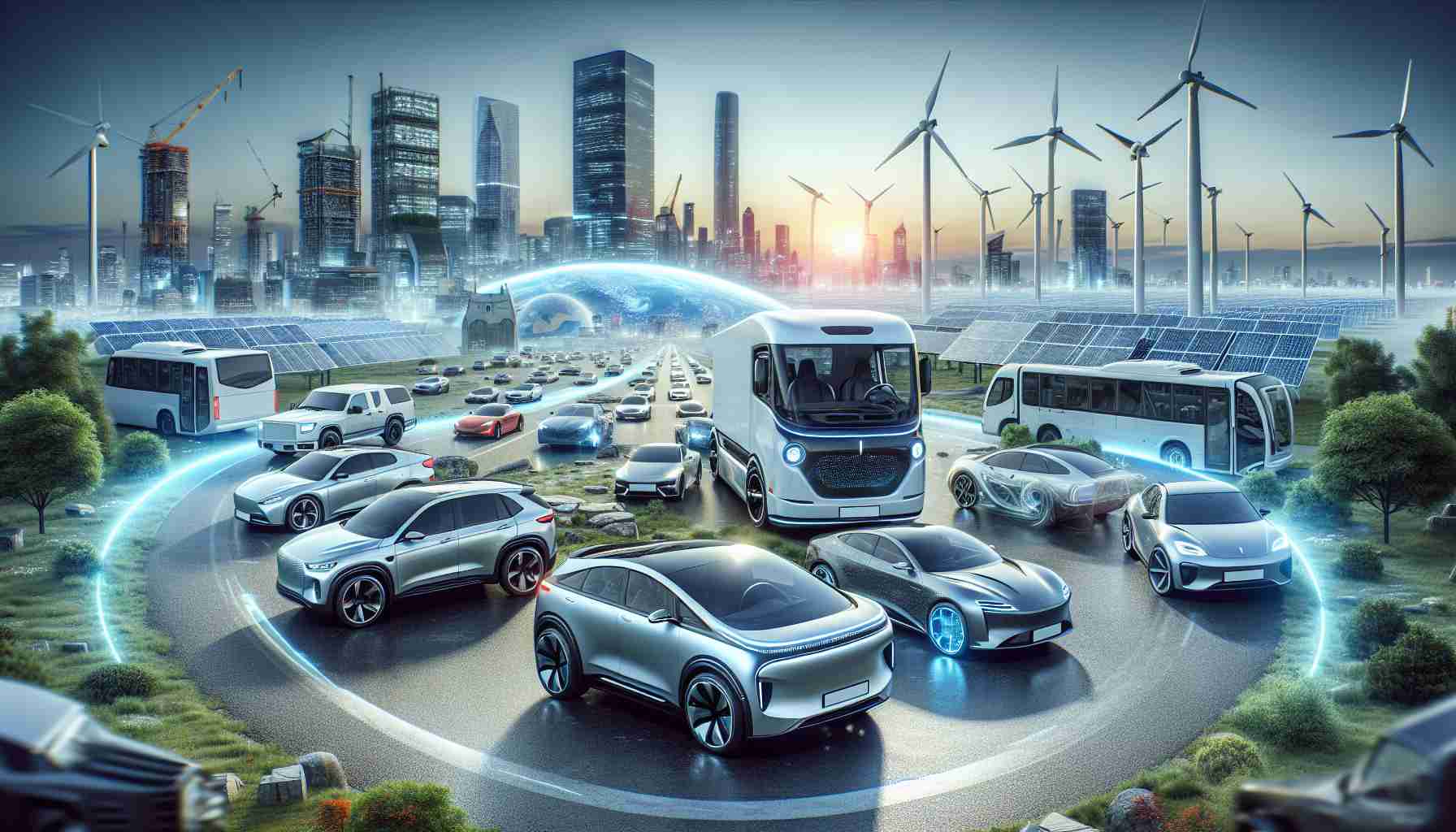Understanding the Changing Auto Landscape
As the electric vehicle (EV) market continues to evolve, Mahendra Goyal, the CEO of the Anand Group, highlights the significant growth in the value of automotive components, particularly in thermal systems and braking solutions tailored specially for EVs. The shift towards electrification is creating a substantial increase in the value proposition of EV technologies compared to traditional internal combustion engines.
Looking ahead to 2024, the automotive market illustrated mixed performance, with passenger vehicle sales seeing a modest increase while commercial vehicles faced challenges amid uncertain consumer sentiment. Goyal noted a downward trend in sales since July, linked to ongoing economic apprehensions.
Despite these hurdles, the future seems brighter, with expectations of 6-7% growth in passenger vehicles by 2025 and a potential recovery in the commercial sector. Meanwhile, India’s EV market, while still emerging, is poised for growth as more manufacturers introduce new models, providing consumers with increased options.
Amid stagnation in global markets, India has the potential for growth, particularly aided by a depreciating rupee that boosts export revenues. Anand Group’s sunroof division is flourishing, with plans for strategic expansions in production to meet rising demand, indicating a strong market foothold.
With a focus on diversification and leveraging global opportunities, Anand Group is strategically positioned to thrive as the automotive industry transitions toward electrification and innovative technologies.
The Broader Impact of the Electric Vehicle Revolution
The shift toward electric vehicles (EVs) is not merely an automotive trend; it signifies a profound transformation in society, culture, and the global economy. As EV adoption increases, it is set to redefine urban landscapes, influencing everything from infrastructure to energy consumption. Cities are adjusting to accommodate the rising number of charging stations, which could pave the way for new types of urban planning and design that prioritize sustainability.
Culturally, the embrace of EVs reflects a growing environmental consciousness among consumers. Consumers are increasingly prioritizing sustainability in their purchasing decisions, prompting a surge in demand for green technologies. This shift represents a broader societal trend towards environmental stewardship, influencing everything from individual behaviors to corporate responsibilities.
On a global economic scale, the EV market is a catalyst for job growth and innovation, particularly in manufacturing and technology sectors. The International Energy Agency estimates that the shift to EVs could create millions of new jobs in battery production and renewable energy over the next decade. Additionally, countries heavily reliant on imported oil may find economic relief and energy independence through the transition to electric mobility.
Looking ahead, the environmental impacts of mass EV adoption could be significant. While the production of electric vehicles currently engages energy-intensive processes, the potential for clean energy integration through renewable sources presents a long-term solution to carbon emissions. The shift also raises important questions about resource extraction, particularly for lithium and cobalt used in batteries, emphasizing the need for ethical sourcing practices.
As technology continues to advance, future trends may include enhanced battery efficiency, autonomous driving, and widespread vehicle-to-grid systems, furthering the integration of EVs into daily life and economic systems. The successful navigation of these changes could ultimately shape a sustainable automotive ecosystem that benefits both people and the planet.
Innovations and Insights in the Evolving Automotive Landscape
Understanding the Changing Auto Landscape
As the automotive industry shifts towards electrification, significant transformations are underway, impacting everything from manufacturing to consumer preferences. This evolution is largely driven by the increasing demand for electric vehicles (EVs) and the adoption of technologies that enhance performance and efficiency.
Key Innovations in Electric Vehicles
The value proposition of EV technologies is on the rise, particularly in the realms of thermal systems and braking solutions. Automotive components designed specifically for EVs are experiencing notable growth, setting them apart from traditional internal combustion engine systems. Innovations in battery technology, such as solid-state batteries, are also anticipated to revolutionize the EV market, providing greater efficiency, longer ranges, and faster charging times.
Current Market Trends
Looking ahead, the automotive market is expected to demonstrate a mixed performance trajectory. While passenger vehicle sales are projected to grow by 6-7% by 2025, the commercial vehicle sector faces challenges largely influenced by fluctuating consumer sentiment. This uncertainty was marked by a drop in sales since July, reflecting broader economic concerns.
Despite the sluggishness in global markets, India’s automotive sector is positioned for expansion. The depreciating rupee is expected to enhance the country’s export revenues, making it a pivotal player in the global EV landscape. Additionally, as more manufacturers roll out new EV models in India, consumers will benefit from a wider array of choices.
Pros and Cons of the Electric Vehicle Transition
Pros:
– Environmental Impact: EVs contribute to reduced greenhouse gas emissions compared to traditional vehicles.
– Operational Cost Savings: Lower maintenance and fuel costs provide economic benefits for consumers.
– Government Incentives: Many governments offer tax rebates and incentives for EV purchases.
Cons:
– Infrastructure Limitations: Charging station availability and range anxiety still pose challenges for widespread adoption.
– Initial Costs: The upfront price of EVs can be higher than conventional cars, although this gap is narrowing.
– Battery Disposal Concerns: Proper recycling and disposal of EV batteries remain critical issues for sustainability.
Use Cases for Electric Vehicles
EVs are diversifying in application, with features catering to various consumer needs, including:
– Urban Commuting: Compact and efficient models ideal for city driving.
– Luxury and Performance: High-end manufacturers developing powerful, performance-oriented electric models.
– Commercial Use: Delivery vans and trucks designed for short-haul options that reduce operating costs.
Future Predictions
Experts forecast accelerated growth within the EV sector, particularly as technology improves and prices decline. There’s also a growing emphasis on sustainable manufacturing practices, reducing carbon footprints throughout the supply chain.
Summary
The automotive landscape is in a state of flux, driven by innovations and evolving consumer preferences. The transition towards electric vehicles presents both opportunities and challenges, but with strategic planning and technological advancements, the future of the automotive industry appears promising.
For further insights on the automotive industry and advancements in electric vehicles, visit AutoTrader for the latest news and trends.













